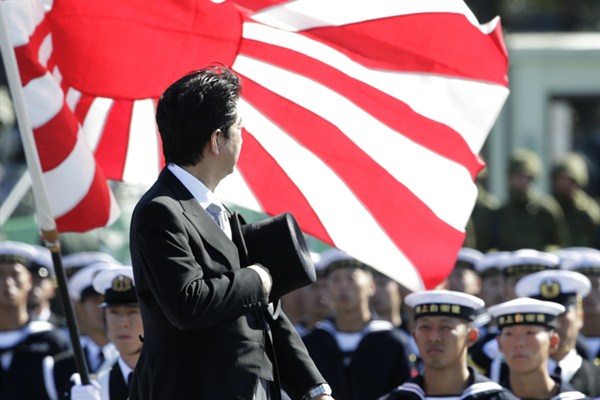Earlier this month, the Japanese Defense Ministry said two Russian fighter jets
had violated its airspace, roughly a month after Japan announced a similar violation by China. In an email interview,
Richard Bitzinger, an expert in Asia-Pacific military modernization at Singapore’s Nanyang Technological University, discussed the state of the Japanese Air Self-Defense Forces and Japan’s response to regional tensions.
WPR: What is the current state of the Japanese Air Self-Defense Force (JASDF)?
Richard Bitzinger: Historically, the JASDF has been the most powerful air force in East Asia, and, for the most part, it still maintains a strong reputation. It comprises approximately 400 fighter aircraft, particularly operating around 200 F-15 Eagles, which are produced locally under license. That said, the JASDF faces two worsening problems: a growing obsolescence and a lack of offensive weaponry. Regarding the first point, the JASDF needs to replace around 100 aging F-4J fighters; the acquisition of F-35 Joint Strike Fighters is intended to fill this gap. The JASDF also, however, needs to begin thinking about phasing out its unsuccessful F-2 fighter. This combat aircraft, based on the F-16 and co-developed with the U.S., has been only a mediocre performer, and it has suffered from wing cracks and other structural problems. Due to high costs, only 94 F-2s were ever built, though JASDF had originally planned to acquire 130 of them, and 12 were lost in the 2011 Tohoku earthquake and tsunami.
Second, the JASDF, due to Japan’s traditional “exclusively defense-oriented posture,” lacks many weapons for long-range precision strikes. Fighter aircraft carry mainly air-to-air missiles, although the F-2 is designated a maritime strike aircraft, armed with anti-ship weapons. Only in recent years has the JASDF acquired precision-guided air-to-ground weapons, particularly the GPS-guided Joint Direct Attack Munition.
WPR: What is the status of Japan's F-35 acquisition, and what other major purchases is it considering?
Bitzinger: The JASDF decided in late-2011 to acquire the F-35 Joint Strike Fighter (JSF), and it placed an initial order for 42 JSFs, which at the time was estimated to cost $8 billion. However, the price is likely to rise -- perhaps by as much as 50 percent -- given cost increases in the JSF program; nevertheless, Tokyo placed its first orders for four F-35s in fiscal year 2013. The question is whether the JASDF will order additional F-35s, or go ahead with a proposed indigenous “fifth-generation” fighter, which would likely cost even more than the JSF.
Other purchases include the new C-2 transport plane and perhaps additional PAC-3 Patriot missiles, which can shoot down incoming ballistic missiles.
WPR: What is Japan doing do boost its air defenses in response to rising tensions with China?
Bitzinger: Japan’s growing missile defense network -- Patriot PAC-3 systems on land, and the Standard-3 ballistic missile defense system, deployed on Aegis destroyers based at sea -- is directed mostly against missile threats coming from North Korea. However, these systems would also provide some defense against any Chinese missile attack. Nevertheless, Japan is struggling to maintain a qualitative and quantitative balance with an increasingly capable Chinese air force, which currently operates around 400 modern fighters (Su-27s, Su-30s and J-10s) and is buying more. Much of the JASDF fighter force is geared toward air defense, and it is acquiring advanced air-to-air missiles, but quantities have been limited by a highly constrained defense budget.

